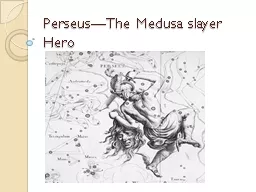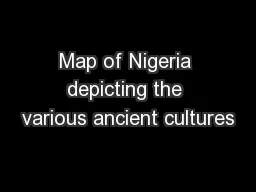PPT-Head of an Ife King
Author : yoshiko-marsland | Published Date : 2016-06-18
Introduction In January 1938 workmen were digging foundations for a new house in Wunmonije Compound in the city of Ife in what is now southwestern Nigeria While
Presentation Embed Code
Download Presentation
Download Presentation The PPT/PDF document "Head of an Ife King" is the property of its rightful owner. Permission is granted to download and print the materials on this website for personal, non-commercial use only, and to display it on your personal computer provided you do not modify the materials and that you retain all copyright notices contained in the materials. By downloading content from our website, you accept the terms of this agreement.
Head of an Ife King: Transcript
Download Rules Of Document
"Head of an Ife King"The content belongs to its owner. You may download and print it for personal use, without modification, and keep all copyright notices. By downloading, you agree to these terms.
Related Documents














